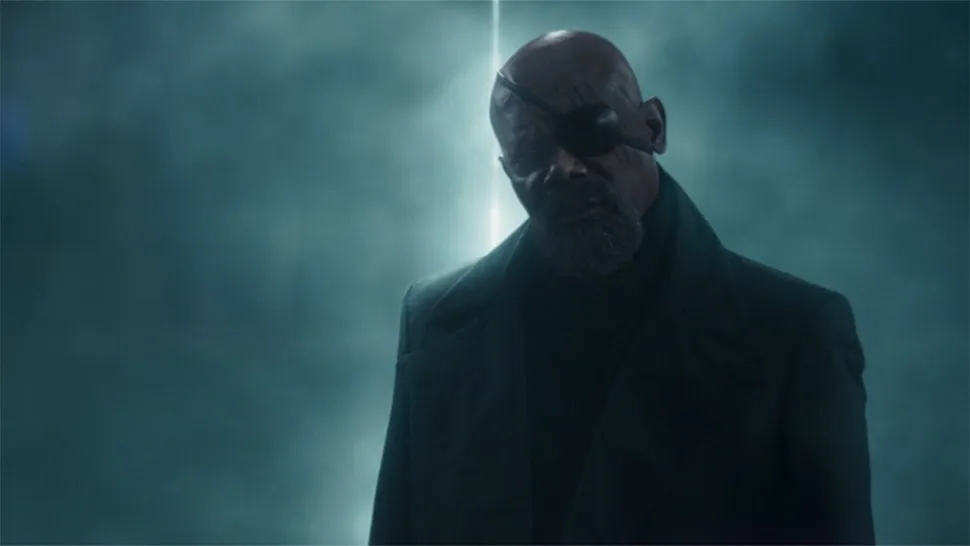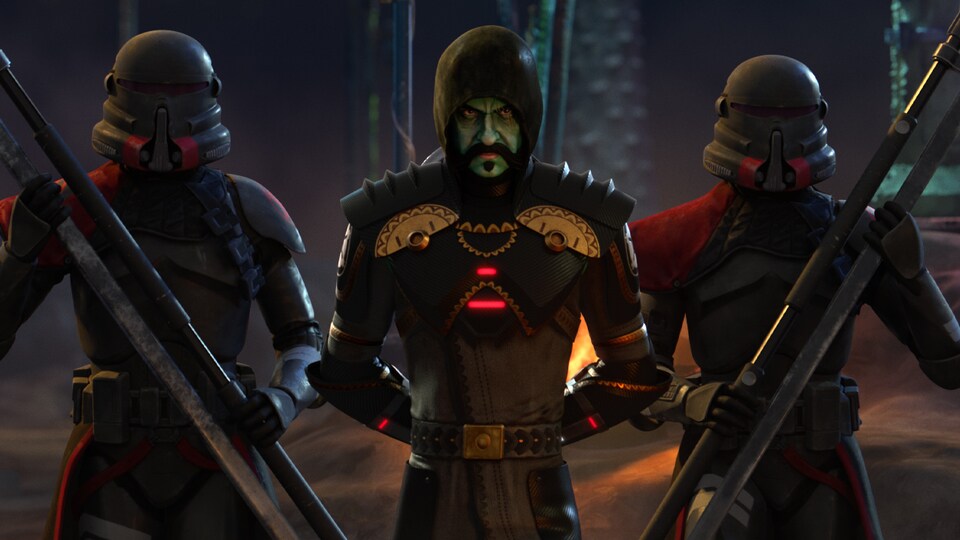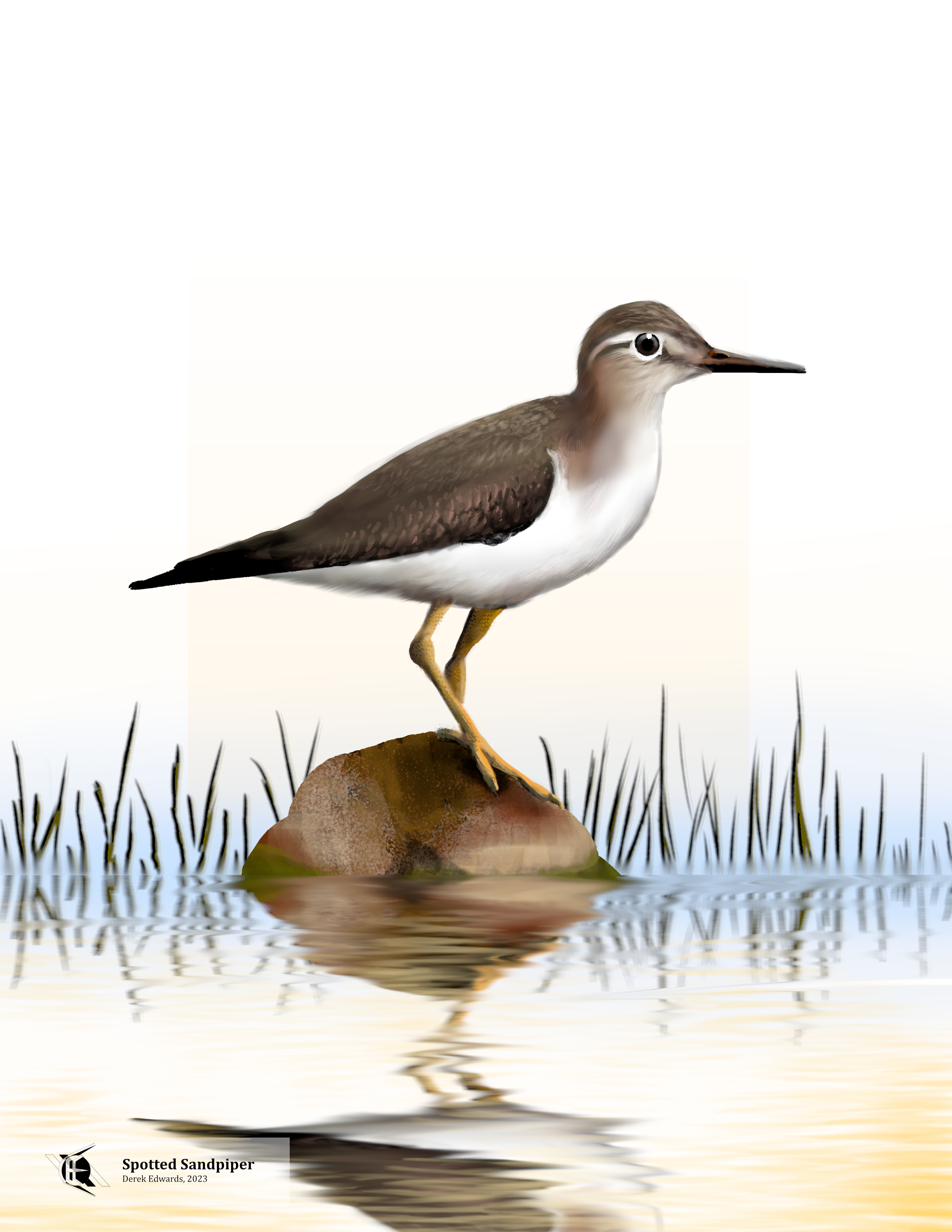
Running Commentary 7/31/2023
Hello,
This past week was Shark Week, something that used to be a minor cultural touchstone among cable TV viewers. I think its popularity has fallen off a bit, but it got me thinking. Penguins are the closest thing, among birds, to sharks. I've been meaning to draw a penguin again, to distract from the summer heat. I also have a reading list full of penguin-related magazine articles, which are good candidates for the Curations. So I'm declaring next week (not this week, since I already have this newsletter put together at the time of writing this opening) Penguin Week at A Running Commentary. Tell all your penguin-loving friends to watch this space.
Anyway...
Watching...

Secret Invasion
The sixth and final episode of Secret Invasion was released last week. Here are my notes on the finale and on the series as a whole:
- Well, I enjoyed this show. I do think that the ending was weaker than the beginning. So much dependent on the actions of G'iah and the president who just weren't characters we'd spent much time with. I had no idea what sort of man the president is. I don't know what sort of relationship he had with Fury, so the scene where Fury's asking for him to trust him over Rhodey that he shouldn't attack Russia doesn't work very well. G'iah is a character who's largely been defined by what she doesn't want and who she isn't sided with; here going after Gravik doesn't not make sense, but narratively it would work better to have Fury, our main hero, be the one to face off against the main villain. What made this show so good was that it wasn't a show about superheroes, it was about superspies. Once they established that Gravik would be getting all the Avengers' powers, I figured I wouldn't like whatever way he'd be defeated, since it would be by Fury. I will say that the fight between Gravik and G'iah didn't overstay its welcome.
- I checked with some acquaintances with some knowledge of the effects of radiation exposure because the way "Fury" started coughing as soon as she stepped out of the car seemed scientifically inauthentic, even for Marvel. It was all wrong; the actual effects of acute radiation exposure start with the blood and provoke dizziness and nausea; radiation sickness starts out looking a lot like food poisoning. A cough could come up later when you start suffering multiple organ failure, but that wouldn't happen right away. I suppose I can excuse it seeing how G'iah's faking illness and neither she nor Gravik are probably familiar with the effects of radiation on humans, considering it doesn't do anything to them. Still, it was something that stuck out as wrong.
- I've seen a lot of declarations that G'iah is now the most powerful being in the MCU. I don't think that's true. I'd still figure characters with magic knowledge (Wanda, Wong, Dr Strange) would be more powerful. And while G'iah probably has their genes to draw from their powers, all training-based, so they shouldn't transfer.
- There's all kinds of speculation about when Rhodey was captured by the Skrulls and replaced by Ravaa. We probably won't get any solid answers until Armor Wars, but I don't think it's been as long as some suggest. Overall, it seems like Gravik's whole plot only got rolling after the Blip; once Fury disappeared, that's when Telos summoned the surviving Skrulls to live on Earth in secret. And it seems that it was after Fury reappeared and left Earth for his SWORD space station that Gravik felt truly abandoned by him. I definitely think that Rhodey was really Ravaa in The Falcon and the Winter Soldier; he might have been in Avengers: Endgame, but I don't think any earlier than that.
- The ending of the episode, I found very confusing. I have no idea what all those people that Sonya showed G'iah were. I also am very surprised to see Fury go back to the space station since he spent so much of the show apologizing for living up in space since the Blip.
- Overall, I enjoyed this series. It's not the best thing Marvel's put out, but it's far from the worst, as its weirdly harsh reviews would suggest. I'd honestly give the same evaluation to Secret Invasion that I gave to season one of Loki: It's a well-put-together show that starts stronger than it ends, in no small part because it ends with lead-ins to later projects at the expense of resolving its own plot coherently. I thought that the direction and performances were quite good. The plot was interesting but understandable. The action scenes, what few there were, were the weak point, which is a shame since there was a lot of potential for good grounded action here. As a spy thriller, it somewhat lacks suspense, but I think that more going it had more going for it than against it. If you have Disney+ and haven't watched Secret Invasion yet, I'd say give it a try.

Star Wars: Visions
This week's short comes from the Indian animation studio 88 Pictures. Here are my notes on "The Bandits of Golak":
- The animation here is incredibly similar to the usual LucasFilm Animation style, to the point that I wondered if 88 Pictures had worked on Clone Wars or Rebels at some point. From what I can tell, no, they hadn't worked on Star Wars before this.
- The story here is a little bit safe for Star Wars, but I think it was done pretty well, considering the length. The inquisitor, specifically, I really liked. He's not in it for very long, but he steals his scenes. Neeraj Kabi isn't a big enough name in the West to go on The List, but his performance here is great.
- The costuming, music, and big crowded train were all very Indian, but I felt like this short wasn't as much of a specific cultural spin on Star Wars as some of the others. Maybe that's because the animation was so familiar to Star Wars.

Bird of the Week
I'm going to do something a little different this week and tell a personal story about the week's bird. I recently took a few days' trip to western Michigan, To enjoy the lakeshore. On my way back into Michigan's interior I stopped at a dam on the Kalamazoo River in a town called Allegan. Dams make four interesting parts of rivers, and eBird promised a fair number of birds to be spotted at this one's base. I wasn't disappointed. I saw herons, blackbirds, grackles, and waxwings. I saw a family of purple martins high up in a dead tree. I saw a yellow warbler and an eastern kingbird and an indigo bunting.
And I saw a little drab bird clambering over rocks on the river's edge, fearless in the presence of a northern watersnake that had slithered out of its namesake, fish in mouth. The bird was a sandpiper; I could tell that much from the roundness of its head and the length of its bill, which differentiates sandpipers from plovers. But what sort of sandpiper was it? I hadn't brought my copy of Sibley's on the trip, but I did bring my phone, and on my phone I keep installed an app called Merlin, a bird identification aid published by Cornell University, the same group that maintains eBird. I, at turn, scrolled through Merlin's list of sandpipers found in that region of the country and strained my eyes through my binoculars at the bird, which kept ducking behind rocks and brush. It had a plain brown-gray back and a white front yellow legs and a dark but otherwise non-committedly colored beak, the sort field guide writers describe as "horn-colored". It looked, maddeningly, nothing like any of the sandpipers listed on Merlin. North American Sandpipers don't have plain brown-gray backs; they have brown-gray backs with black spots and white fringed feathers. I couldn't get a clear, steady look at the thing. Did it have black spots that I was missing? Was it a sandpiper or some other sort of shorebird? I had about given up on identifying the bird, resigning myself to a day of Grouchiness and a fading memory of a bird's field marks playing through my mind when I remembered that it was late July and that this bird, much like the gray backed purple martin's perched above, was likely a juvenile not yet in adult plumage. I scrolled to Merlin again, finding the one sandpiper without spots on its back: the spotted sandpiper. Adults of which sport their spots, thrush-like on their breasts. I opened the entry. and swipe through the pictures until I found a photo of a juvenile, its spots not having come in yet. This was my bird.
So yeah, this bird of the week is a PSA. Birds can look different depending on age, sex, time of year, region, and even just on an individual bird-by-bird basis. It's important when birding to consider these different looks, as well as things like songs (which is how I could tell the Purple Martins weren't bank swallows) and behavior. While I was watching this sandpiper, I noticed it was pumping its tail end up and down as it searched the rocks for food. This is a characteristic action of sandpipers in the spotted's genus, I've since learned. One of the reasons I like Sibley's guide so much is that he makes sure to note all of the considerations in his entries for each bird, rather. than just featuring a big photo of a breeding male and a range map like some other guides I've seen.
So what about this bird anyway? Spotted sandpipers are the American counterpart of the Eurasian common sandpiper, with whom it seems to share ancestry. Common sandpipers are the main bird typifying what a sandpiper is, though the sandpipers belong to a larger family whose type species is the Eurasian woodcock, a similar but distinct sort of bird. Sandpipers specifically are characterized by long legs, small heads, long beaks, and distinct necks, not as long as those are some other wading birds, but more visible than those of woodcocks or plovers. Sandpipers feed on small fish and invertebrates. Spotted sandpipers breed in Canada and the United States then migrate to Central and South America for the winter. Spotted sandpipers that stray to Europe typically join communities of common sandpipers.
The term, "sandpiper" simply came from the fact that these birds are often found on sandy shores and the fact that they make high peeping sounds. In Spanish sandpipers are "andarríos", or "river walkers". In French, sandpipers are "cheveliers", or "knights", though why such unassuming little birds should be thought of as knighted, I don't know. To science, the spotted sandpiper is Actitis macularius, or the "spotted coast-dweller".
Curation Links
A Surprising Dearth of Spectacled Bears | Gloria Dickie, Lapham's Quarterly
Excerpted from Dickie's Eight Bears: Mythic Past and Imperiled Future, this account is of the bear that inspired Paddington Bear (eventually, after his creator learned that there were not bears in Africa, but that there was one in South America). Spectacled bears figure little into the art of local Peruvian cultures, unless a creature typically considered a jaguar is one. And when they do, it's not as a lovable marmalade-eater in a floppy hat, but as a fearsome half-man creature more at home as the killer in a true-crime doc.
The Case of the Fake Sherlock | David Gauvey Herbert, New York Magazine
A profile of a profiler, or at least a professed profiler. A profiler whose profession was practically perjury. Richard Walter, a psychologist with a stunted career, was a co-founder of the Vidcoq Society, a Pennsylvania-based club of private crime-solvers. His reputation as an expert was based on not-particularly-convincing lies about his background, but the stories he invented about crimes gave prosecutors and juries just what they were looking for, and just what rarely exists in real courtrooms; a neat, plausible narrative.
Behold, the Book Blob | R.E. Hawley, PrintMag
A look at cover design trends of recent years, specifically those leading new novels all to look alike, with bright, abstract daubs of color in the background of text rendered all the less readable due to the inability to contrast with every color equally.
Division by Zero | Ted Chiang, Fantastic Metropolis
[FICTION] A mathematician’s research uncovers a disturbing truth about our world. Ted Chiang is the writer of the story that became the movie Arrival, and this story should be right up your alley if you liked that film.
See the full archive of curations on Notion






Member Commentary